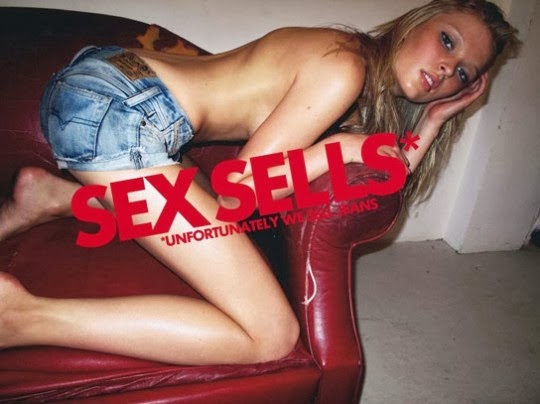To demonstrate our ability to understand and incorporate the various ideas we have been presented with throughout the course of this module into our own animation practice, we have been tasked with short yet relevant animation. Although ideally this animation would be correspond with the essay topic we are simultaneously working on, it was not mandatory.
Rather than develop an animation based of the effectiveness of animation as a vehicle for politics, propaganda or social cause, I was more drawn to using the advertising lecture as inspiration. To me, this was one of the most engaging lectures we received, and the ideas and questions covered have remained with me since, the most predominant being: does sex sell? Or rather, is the use of provocative sexual/social/political imagery an effective way of advertising a product? Will the target demographic remember the product, or will it be lost behind the sensationalist imagery?
 |
| The image and message are attention grabbing, but will we remember the brand? |
Prime examples of such adverts can often be found in the world of fashion, with clothing and perfume ads often using attractive men and women to make the products seem desirable, or even replace the product entirely.
In this Yves St Laurent ad for Opium perfume, there isn't even a token perfume bottle in sight; the focus is entirely upon the model Sophie Dahl. The detractors argued that this was objectification taken too far, was sexually aggressive and subjective. Yves St Laurent said it was empowering and liberating to women. Yet looking beyond the controversy, how much does this advert communicate about the product? Aside from Dahl, the gold lettering and deep, sumptuous blue surroundings convey a sense of luxury, while 'Opium' itself suggests the Orient and exoticism. But that's it. Can these subtle details compete with Dahl's ostentatiousness?
These are the kinds of questions that I hope to address in my 10-30 second animation.
